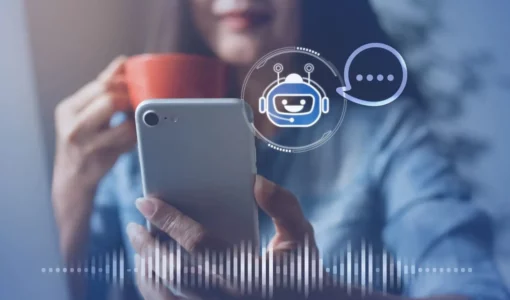
As a result, healthcare professionals will be able to serve a more significant number of patients. Immediate assistance in emergency circumstances and providing answers for simple medical difficulties are the most common advantages of deploying bots. AI-powered Chatbots can be used to assist patients and guide them to receive the appropriate help.
Study shows AI chatbot provides quality and empathetic answers to … – News-Medical.Net
Study shows AI chatbot provides quality and empathetic answers to ….
Posted: Sun, 14 May 2023 07:00:00 GMT [source]
Chatbots can ask simple questions like a patient’s name, contact, address, symptoms, insurance information, and current doctor. All this information is extracted from the chatbots and saved in the institute’s medical record-keeping system for further use. One of the most important things to understand about NLP is that not every chatbot can be built using NLP.
Collecting patient information for caregivers
In this context, AI has emerged as a potential game-changer, offering a solution to some of the most significant challenges in the healthcare industry today. AI can lead to better patient outcomes, improve the productivity and efficiency of care delivery, and get life-saving treatments for overall development. It can even improve the day-to-day life of healthcare practitioners, letting them spend more time looking after patients, raising staff morale and improving retention. Healthcare has advanced significantly in recent years, and one of the main reasons for this progress is the incorporation of advanced technology. Rapid innovations and developments in medical science have led to longer life expectancies worldwide.

Chatbots ask patients about their current health issue, find matching physicians and dentists, provide available time slots, and can schedule, reschedule, and delete appointments for patients. Chatbots can also be integrated into user’s device calendars to send reminders and updates about medical appointments. Conversational chatbots with different intelligence levels can understand the questions of the user and provide answers based on pre-defined labels in the training data. Healthcare chatbots can remind patients about the need for certain vaccinations.
Let See Chatbot Use Cases in Healthcare
Whereas open-ended questions ensure that patients get a chance to talk and give a detailed review. Your conversation with an AI chatbot in healthcare will have a similar route. Because the last time you had the flu and searched your symptoms on Google, it made you paranoid. It allows you to integrate your patient information system and calendar into an AI chatbot system. Thankfully, a lot of new-generation patients book their appointments online. Chatbots collect patient information, name, birthday, contact information, current doctor, last visit to the clinic, and prescription information.
- This means the agent will be able to jump on and have access to all of the important info from the get-go.
- Service providers can use a Chatbot to answer queries about insurance claims, processes, and coverage.
- The discussion between the human and the Chatbot will run smoothly if the user interface is good.
- For someone with no prior experience in the technical field, developing a healthcare Chatbot might be a tremendous challenge.
- If you wish to see how a healthcare chatbot suits your medical services, take a detailed demo with our in-house chatbot experts.
- AI is transforming the fashion industry by analyzing large amounts of data to identify trends, predict consumer preferences, and generate ideas to streamline design operations.
But chatbots have actually come a long way—and I’ve pulled some of the best chatbot use cases to show just how varied and, dare I say, smart they can be. The most significant difference between these compliances is that GDPR covers citizens of the EU while HIPAA is restricted to American citizens and healthcare companies. Chatbots can ask a new worker the required questions and help him fill out necessary papers. After that, a bot can provide completed documents for a person to sign or send straight to the HR department. Currently, there are more than 1000 chats with the bot, and the success rate is over 65%, which means that most of the patients that start the interaction complete the whole chatbot flow.
Identifying symptoms – WhatsApp chatbots in healthcare
For example, a chatbot named Vik was developed to empower patients with breast cancer. It was communicatign with patients on their condition, followed by addressing their anxieties and fears, as well as reminding about the prescriptions. Vik improved the medication adherence rate of patients and metadialog.com showed the overall satisfaction rate 93.95%. First of all, a chatbot, placed on the website or popular messaging channels, can chat with patients, get them to reveal symptoms, and then transmit the data to doctors. That’s a new story for medical personnel that used to do all of that manually.
Best Artificial Intelligence Software 2023 – eWeek
Best Artificial Intelligence Software 2023.
Posted: Wed, 07 Jun 2023 18:01:22 GMT [source]
A well-built healthcare chatbot can understand user intent with the help of sentiment analysis. Chatbots can effectively replace human involvement when handling simple redundant requests. 24/7 availability means that healthcare facilities no longer need to hire additional staff to handle requests at non-standard times. Despite the obvious pros of using healthcare chatbots, they also have major drawbacks. If you break a bone or get an infection or have a heart attack, you’re not going to turn to a bot (please don’t!).
A Peek into the Future of Healthcare Chatbots
Perhaps for now, but the potential to improve patient payments with AI is real. Price transparency and financial education could translate to patient satisfaction and loyalty—in fact, 60% of patients who know the cost of a planned medical service will proceed with that service. The interface of your chatbot can be a make it or break it moment for user engagement. Once again, go back to the roots and think of your target audience in the context of their needs. The process of building a health chatbot begins by making several strategic choices. We’ll keep it short and sweet, avoiding technical jargon and focusing on the key aspects of creating your chatbot app.
What are the biggest problems with chatbots?
- Not identifying the customer's use case.
- Not understanding customer emotion and intent.
- The chatbot lacks transparency.
- When customers prefer human agents.
- Not able to address personalized customer issues.
- Lacking data collection and analysis functions.
- Not aligning with the brand.
Suffice it to say, bringing AI bots into healthcare practice is no longer a question of whether, but rather, a question of how and to what extent. The patient virtual assistant then stores this information in your system, which can be time-saving for doctors in an emergency. You can also use this information to make appointments, facilitate patient admission, symptom tracking, doctor-patient communication, and medical record keeping. The job of medical virtual assistants is to ask simple questions, for example, have you been experiencing symptoms such as fever, cold, and body ache? A healthcare chatbot example for this use case can be seen in Woebot, which is one of the most effective chatbots in the mental health industry, offering CBT, mindfulness, and dialectical behavior therapy (DBT).
Tap into the power of AI-powered chatbots for healthcare
Another way ChatGPT is used in transportation and logistics is through automated document processing. The model can be trained to understand shipping documents, invoices and bills of lading and then extract relevant information from them automatically. This can greatly speed up the process of tracking and managing shipments, and make it more accurate. Another way ChatGPT is used in education is through automated essay scoring and feedback. The model can be trained to understand written language and provide automated feedback on student essays, which can help teachers to grade papers more efficiently and provide more detailed feedback.
How do you write a use case for a chatbot?
- Automate your website support.
- Support customers inside the mobile app.
- Handle internal helpdesk support.
- Chatbots help to collect customer feedback.
- Bots help in order confirmation & tracking shipping.
- Chatbots handle refunds & exchange requests efficiently.
What are the limitations of healthcare chatbots?
- No Real Human Interaction.
- Limited Information.
- Security Concerns.
- Inaccurate Data.
- Reliance on Big Data and AI.
- Chatbot Overload.
- Lack of Trust.
- Misleading Medical Advice.

8 comments
porno izle says:
Fév 25, 2024
How Healthcare Chatbots are Transforming the Medical Industry | PFE13
https://www.soiel.it/trk/link/5cde5ed8da4596.04590342/?url=https://cheapcamshows.com/en/events/jeniffer/
porn says:
Fév 25, 2024
How Healthcare Chatbots are Transforming the Medical Industry | PFE13
https://billnexus.com/hello-world/
child porn says:
Fév 26, 2024
How Healthcare Chatbots are Transforming the Medical Industry | PFE13
https://bonaparte48.eu.org/2022/07/25/
porn says:
Fév 26, 2024
How Healthcare Chatbots are Transforming the Medical Industry | PFE13
http://ubonsri.ac.th/index.php/2012-02-14-23-03-54/241-2016-01-06-05-16-54
porno izle says:
Mar 10, 2024
How Healthcare Chatbots are Transforming the Medical Industry | PFE13
https://rip-covid19.com/us-president-joe-biden-tests-positive-for-covid-bbc-news/
porn says:
Avr 16, 2024
How Healthcare Chatbots are Transforming the Medical Industry | PFE13
https://merkezoil.biz/foto-galerija/
grandpashabet says:
Avr 27, 2024
How Healthcare Chatbots are Transforming the Medical Industry | PFE13
https://mayflowersuites.com.ar/areas-comunes_6/
child porn says:
Avr 30, 2024
How Healthcare Chatbots are Transforming the Medical Industry | PFE13
https://ummulquro.sch.id/en/2022-blkk-development-progress-2/